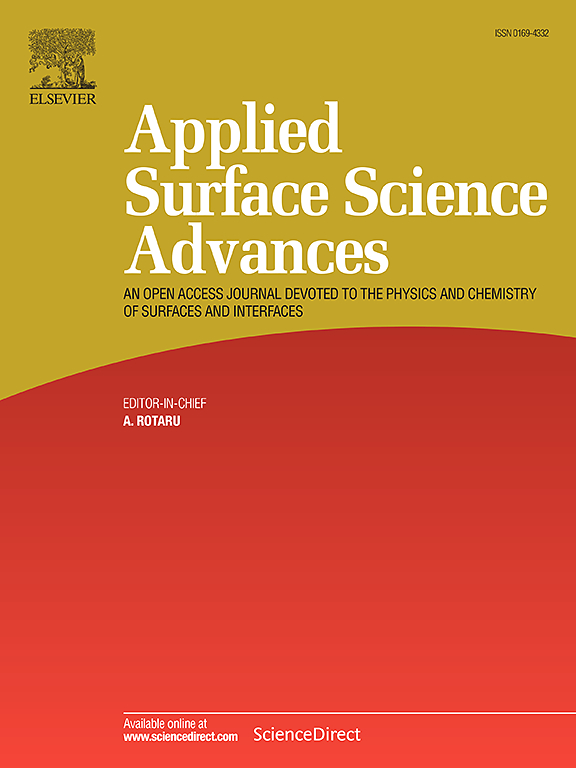Effect of sodium doping in NiO/Vermiculite composite on photocatalytic hydrogen production from methanol-water decomposition
IF 7.5
Q1 CHEMISTRY, PHYSICAL
引用次数: 0
Abstract
This study investigates the efficiency of sodium-doped NiO/vermiculite (Vm) composites as photocatalysts for hydrogen production via methanol-water decomposition under UV irradiation. Using natural vermiculite as a support, NiO was introduced as a p-type semiconductor, and sodium doping was achieved using sodium hydroxide (NaOH) or sodium nitrate (NaNO3). Three synthesis methods - dry synthesis by milling, capillary impregnation, and wet impregnation were investigated for their influence on the structural, textural, optical, and electrical properties and the photocatalytic activity. Characterization techniques, including X-ray fluorescence, X-ray diffraction, atomic absorption spectrometry, photoluminescence, scanning electron microscopy with energy dispersive X-ray spectroscopy confirmed successful incorporation of NiO and sodium into the vermiculite matrix. Photocatalytic tests demonstrated that sodium doping enhances the stability and activity of the photocatalysts by reducing electron-hole recombination rates, with NaOH proving to be a more effective sodium source than NaNO3. Among the samples, those synthesized via capillary impregnation (NiO(OH)/Vm-C) and dry synthesis (NiO(OH)/Vm-M) showed the highest hydrogen yields (550 and 540 μmol/g cat., respectively) due to optimal crystallite size (∼22–23 nm) and defect-induced charge transfer efficiency. This is the first study to systematically investigate the role of sodium doping in NiO/clay-based photocatalysts and to reveal clear structure–property–activity correlations based on synthesis method and dopant type. The findings highlight the potential of Na-doped NiO/Vm composites as cost-effective and scalable photocatalysts for hydrogen production. The insights gained here lay the foundation for further development of layered, clay-supported photocatalysts beyond conventional oxide systems.

NiO/蛭石复合材料中钠掺杂对甲醇-水分解光催化制氢的影响
研究了钠掺杂的NiO/蛭石(Vm)复合材料在UV照射下作为甲醇-水分解制氢光催化剂的效率。以天然蛭石为载体,引入NiO作为p型半导体,用氢氧化钠(NaOH)或硝酸钠(NaNO3)实现钠掺杂。研究了磨粉干法、毛细浸渍法和湿浸渍法三种合成方法对其结构、结构、光学、电性能和光催化活性的影响。表征技术,包括x射线荧光,x射线衍射,原子吸收光谱,光致发光,扫描电镜与能量色散x射线光谱证实了NiO和钠成功结合到蛭石基质中。光催化实验表明,钠掺杂通过降低电子-空穴复合速率提高了光催化剂的稳定性和活性,NaOH被证明是比NaNO3更有效的钠源。其中,毛细管浸渍法(NiO(OH)/Vm-C)和干法(NiO(OH)/Vm-M)的产氢率最高,分别为550 μmol/g cat和540 μmol/g cat。由于最佳的晶体尺寸(~ 22-23 nm)和缺陷引起的电荷转移效率。这是第一次系统地研究钠掺杂在NiO/粘土基光催化剂中的作用,并基于合成方法和掺杂类型揭示了清晰的结构-性能-活性相关性。这一发现突出了na掺杂NiO/Vm复合材料作为具有成本效益和可扩展的制氢光催化剂的潜力。这里获得的见解为进一步开发层状、粘土支撑的光催化剂奠定了基础,超越了传统的氧化物系统。
本文章由计算机程序翻译,如有差异,请以英文原文为准。
求助全文
约1分钟内获得全文
求助全文

 求助内容:
求助内容: 应助结果提醒方式:
应助结果提醒方式:


